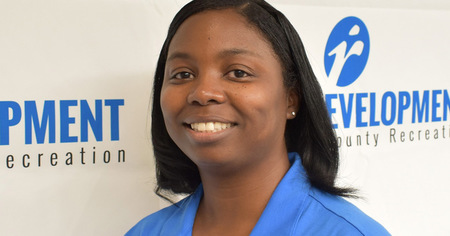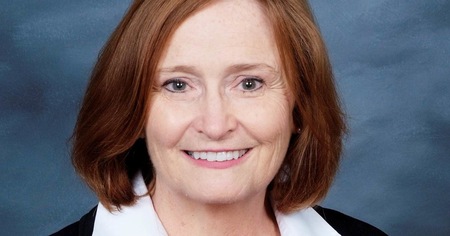You put the same skills used for part-time planning to the test.
There are multiple benefits in developing comprehensive plans for full-day programs:
- Full-day programs present opportunities for creative learning experiences and enhancement activities, such as field trips, guest speakers and Project-Based Learning (PBL).
- A comprehensive plan incorporates variety into the day, which in turn can alleviate boredom and encourage interest and engagement.
- Planning establishes routines and predictable activity for both youth and staff, which is key to managing behavior expectations during the day.
- Predictable routines and activity also benefit families in understanding the daily expectation of the full day program as they determine their out-of-school time options.
Full-day programming can be challenging, but creating a thoughtful plan is essential to ensure the day is successful for both youth and staff. The following tips and strategies can guide you through the full-day planning process. Whether it be full days for summer break, various breaks throughout the school year or nonschool days, these tips can help you keep youth engrossed in activity and learning throughout the day.
Schedule
Before you begin determining the day's activities, you should first create a sound daily schedule.
The daily schedule provides the basic structure for operation of the program. A schedule should outline the routines and expectations for when activities and transitions occur. Without a schedule, you may find youth and even staff aimless and undirected—filling their time with undesired behavior and activity.
A variety of factors should be considered and noted when developing a daily schedule, including:
- Any schedule should begin with the opening time of the program, end with the closing time, and account for the full number of hours the program operates.
- Determine the learning components you want—and need—to include in your schedule. This may be prescribed by your chosen curriculum. Possible components include a group meeting time, large group activity, small group activities, outdoor play, enhancement activities and free-choice activities. Also consider whether youth will participate in these components as a whole group or rotate as small groups through some or all of the activities.
- While most of the schedule will focus on learning components, you will also need to plan time for meals and snacks, transitions between activities, clean up responsibilities and possibly restful downtime for young children attending the program.
- Once all components have been determined, consider the appropriate duration and frequency for each based on the developmental level of the youth in your program. Be sure to create adequate time within the schedule for youth to complete the activities and to transition to other activities.
- Consider the appropriate time of day to implement each component. You will want your most intense learning components planned when youth will be most attentive and captive. Outdoor play is often determined by the weather, climate, and accessibility of an outdoor facility. Be cautious of planning outdoor play during the hottest or coldest part of the day.
- As you implement your schedule, be prepared for unforeseen occurrences that may arise and impact your daily routine. Be willing to adapt your routine to the situation, keeping in mind the developmental level of youth and appropriate times of day for particular components.
Learning Activities
The learning activities you provide youth go hand in hand with the daily schedule you create. Once the routine is established for your activities, the fun part of planning the activities can begin.
The goal when planning any program day is to maintain youth's engagement and interest in learning. Full day programs are no exception. However, full-day programs do present unique challenges and special opportunities for activity planning.
These tips will help you successfully plan learning activities to meet these challenges:
- Allow adequate time before your scheduled full day to research and determine your learning activities. Not only does this give you time to prepare and become familiar with how to implement the planned activities, but to gather supplies to fit within your budget and to share your plans with families.
- Selecting a theme for the day is a helpful way to begin the planning process. Thematic planning allows you to target your ideas toward a specific concept and extend that concept throughout activities, games, supplies and environmental materials.
- Utilize your existing curriculum as the starting point to determine the day's activities. If your curriculum does not offer an adequate amount of activities—or the right type of activities—research supplemental resources for activities to complement your plan.
- Prepare and plan activities for a variety of interests, such as science, drama, construction, literature and music. Keep in mind engagement is not guaranteed with the number of activities planned, but is also dependent on the type of activities planned.
- Be sure to plan enough activities to keep the day full and have a few activities in reserve in case you are left with time to fill. Too many planned activities are better than not enough!
- Always consider the skill level and learning styles of the youth in your program when determining activities. Adapt and accommodate the activities to the abilities of your youth. Also, provide a balance of quiet and active learning experiences to meet youth's varying learning styles.
- PBL experiences, guest speakers, field trips and other types of special events can add an exciting element to a full-day program. These types of experiences need to be planned for well in advance of the scheduled full day and require thorough and detailed plans. Furthermore, these experiences often involve additional expenses that must be accounted for within the program budget.
- It is hard to predict which activities will be successful. Be open to abandoning an activity and substituting it with another that is more agreeable to youth. Or consider reworking an activity or substituting supplies to meet your needs and youth interest.
- Include youth in the development of your activity plans so they can express their voices and choices and have ownership in the planning process.
- Work together as a staff group to brainstorm and develop learning activities. Consider also utilizing family members as a resource for sharing ideas. The more ideas that are generated help to ensure an engaging and interesting plan for youth.
- Curricular planning for full-day programs can open the door to intriguing activities that you might not have time or opportunity to do during your basic program day as well as opportunity to engage a range of youth interests.
The fundamental component to immersing youth into a full-day program is developing a detailed schedule and a comprehensive plan for learning activities. With thoughtful attention to planning, the learning experiences you implement for your full day program will distinguish it from your day-to-day program and take learning to a new level.
Full day programs present a great opportunity for creativity and innovation in planning to shine.
Be willing to think outside of the box and try something new.
Written by Sara VanDyke, NAA Special Programs Consultant.




